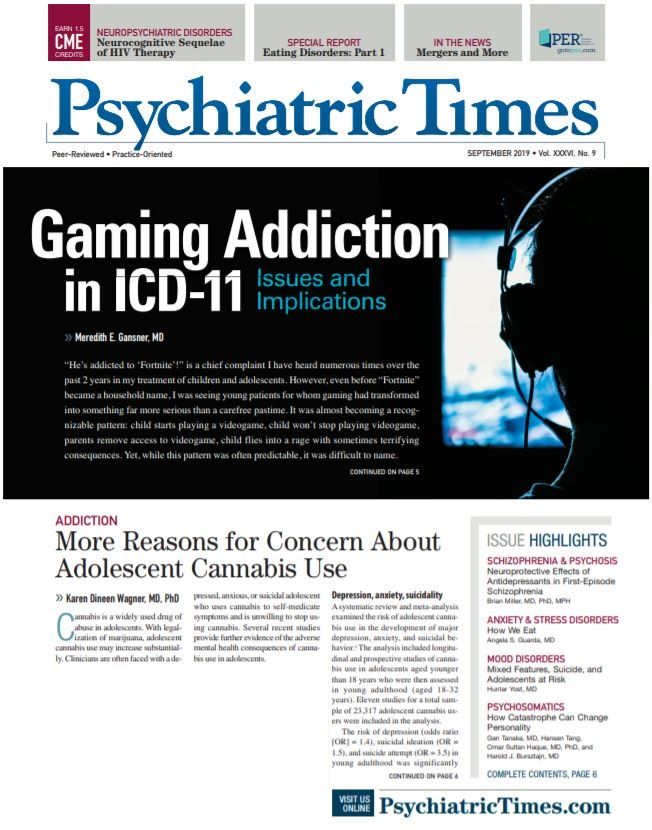Publication
Article
Psychiatric Times
Fasten Your Seatbelts
Author(s):
The evidence is clear: bipolar disorder is frequently both underdiagnosed and overdiagnosed.
©Lightspring/Shutterstock.com

Series Coordinator
In the past several years at the VA National Tele-Bipolar Disorder Expert Consultation Program, my colleagues Drs Eric Smith, Laszlo Gyulai, and I have been writing monthly educational newsletters for clinicians (nationwide) who have been requesting telemedicine consultation on diagnostic and treatment problems of patients with bipolar disorder or possible bipolar disorder.1 Over 2500 consultation requests have been received over more than 8 years and 2100 consultation notes have been delivered, so our group has developed considerable experience with this challenging disorder and the wide variety and complexity of the clinical scenarios and comorbidities that are encountered.
The newsletters are designed for easy and quick reading: all are one typed page in length, with one to three reference citations. The Editor and Board of Psychiatric Times learned of these newsletters and requested to have them published (after review) and made available to their readership. The first one can be read here. The content of these newsletters does not reflect the position of the Department of Veterans Affairs and is solely the product of the authors.
As the coordinator of these publications, I should introduce myself. I have an appointment as Associate Professor of Psychiatry at Harvard Medical School at the VA Boston Healthcare System, Brockton Division. My area of clinical and academic expertise is in the development of evidence-derived algorithms for the psychopharmacology of psychiatric disorders, an endeavor I have been dedicated to since 1985. These algorithms have been published and republished in updated versions and (since 1995) converted to web-based applications that enable rapid and international access to the recommendations through the (free) website of the Psychopharmacology Algorithm Project at the Harvard South Shore Residency Training Program (psychopharm.mobi).
Dr Robert Patterson, a psychiatrist affiliated with McLean Hospital, created the technology for translating the algorithms into their web versions. Psychiatric Times has published articles over the years about the algorithms.2,3 There are algorithms for 10 disorders. There is no commercial activity associated with the website nor have we received any funding for our work from pharmaceutical firms or others: it has been a labor of love for Dr Patterson and me and about 25 collaborators on the different algorithms. It was a great privilege in 2011 to be offered the opportunity to do these consultations and see these complex patients and refine my thinking about their needs and the optimal application of the evidence-base to their care.
To introduce the columns, I begin with a few brief comments about the challenges of diagnosing bipolar disorder. On this, the evidence is clear: the condition is frequently both underdiagnosed and overdiagnosed.4 Patients having manic episodes may be functioning fairly well (or, as they see it, very well indeed) when manic and may not recognize or want to acknowledge the abnormal mood state, and may not seek care. Erroneous diagnoses and incorrect treatment can continue for many years.
The rate of suicide in bipolar disorder is quite high. Hence, the most important initial advice we can give readers of this column is to please pull out your DSM-5 and review the criteria for mania and hypomania. Take the time to carefully assess the patient using these criteria, looking particularly for a history of discreet episodes lasting at least 3 to 4 days. It can help to have a significant other who knows the patient well give input as to whether these discreet episodes have been occurring. Avoid making a positive diagnosis of mania or hypomania after hearing about or observing just a couple of symptoms (eg, racing thoughts, rapid speech, tangential speech). Quick diagnosis on a hunch is a very error-prone process with bipolar disorder. Patients with rapid or overly productive speech and thoughts could have ADHD, PTSD, substance use disorders, or other problems-or all of them at once. If so, each needs to be treated separately-prioritized in order of importance.
Fasten your seatbelts, Psychiatric Times readers. There will be some surprises coming in future issues!
Disclosures:
Dr Osser is a Consulting Psychiatrist, US Department of Veterans Affairs, National Telemental Health Center, Bipolar Disorders Telehealth Program, Brockton, MA.
References:
1. Bauer MS, Krawczyk L, Tuozzo K, et al. Implementing and sustaining team-based telecare for bipolar disorder: lessons learned from a model-guided, mixed methods analysis. Telemed J E Health. 2018;24:45-53.
2. Osser DN, Patterson RD. Enhancing clinical decision-making. Psychiatric Times. 2002;20(5):24-26.
3. Osser DN. The role of guidelines and algorithms for psychopharmacology in 2007. Psychiatric Times. 2007;24(4):55-59,79.
4. McIntyre RS, Zimmerman M, Goldberg JF, First MB. Differential diagnosis of major depressive disorder versus bipolar disorder: current status and best clinical practices. J Clin Psychiatry. 2019;80:15-24.







